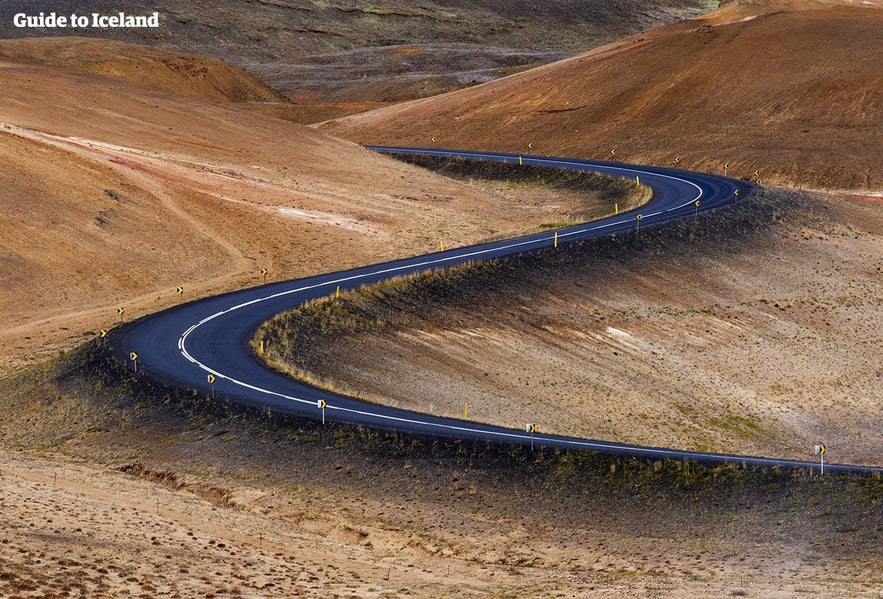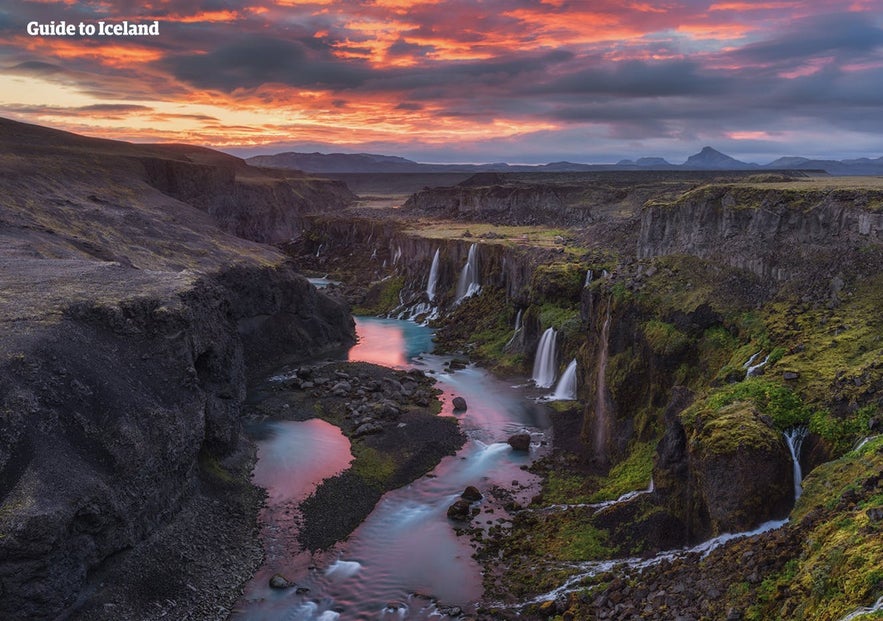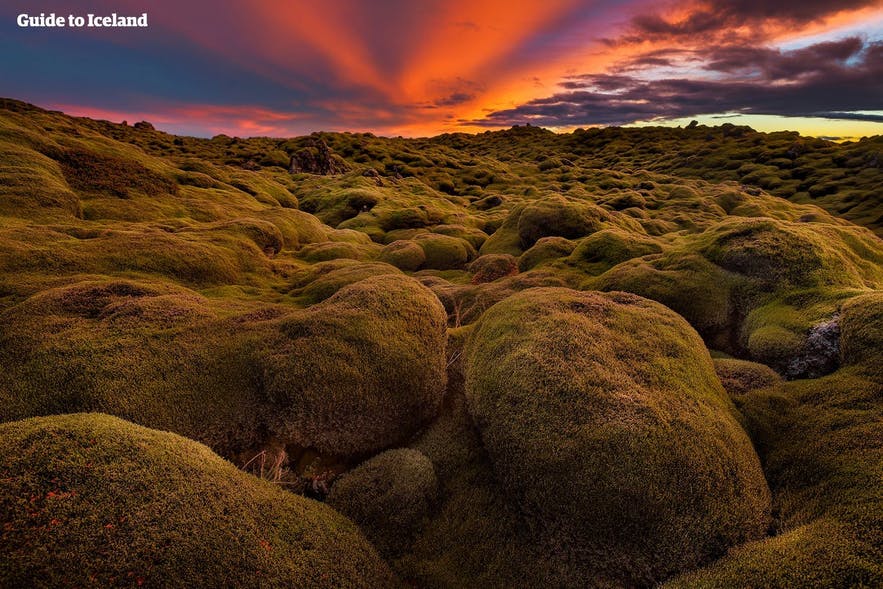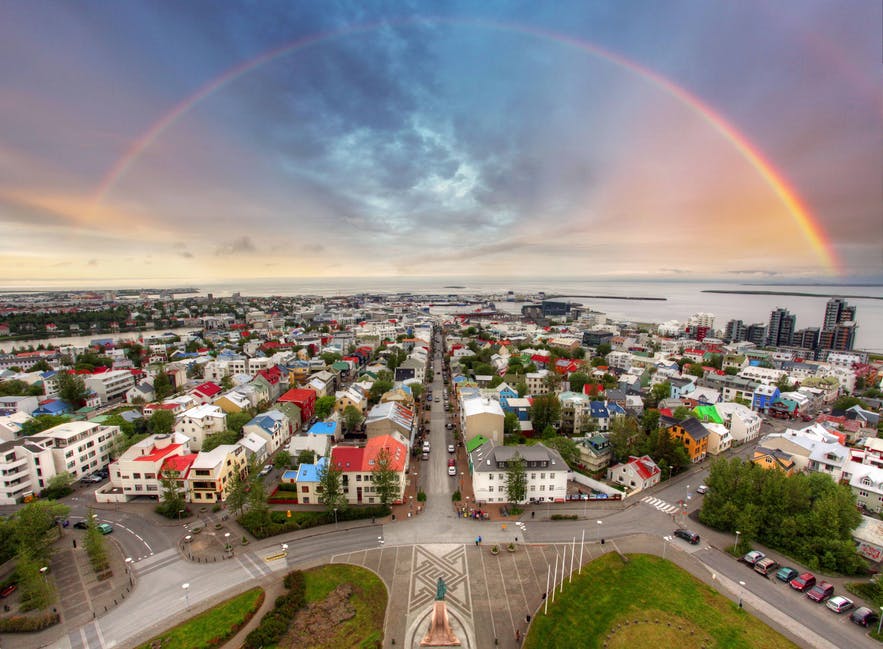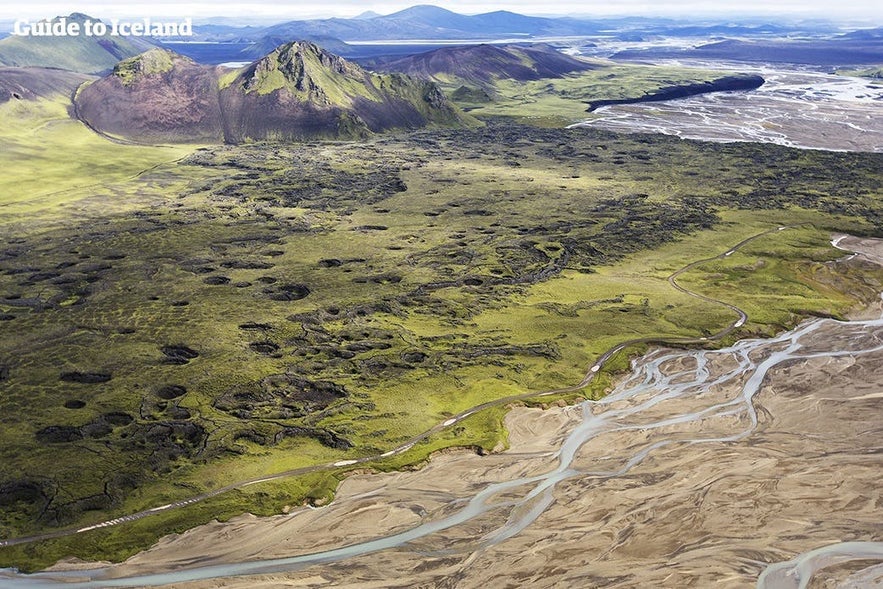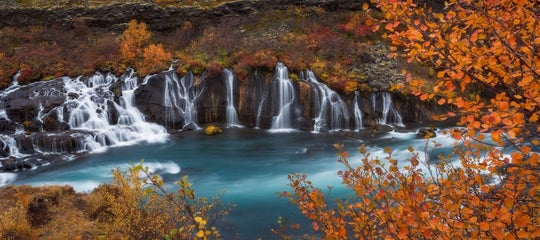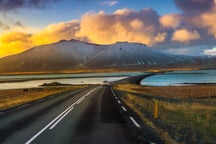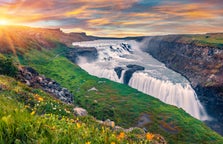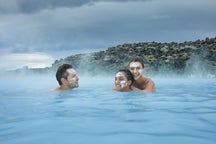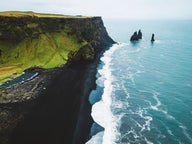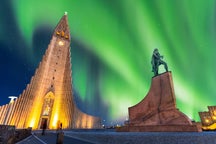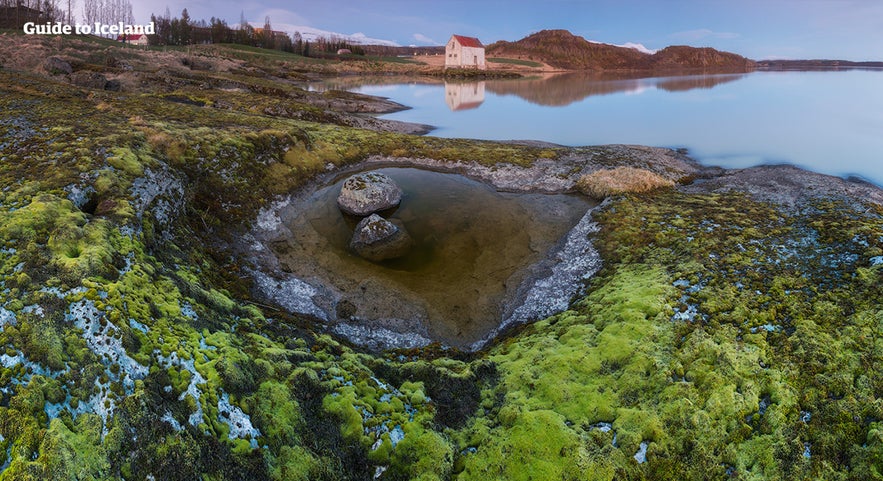
Is hitchhiking a feasible means of travelling around Iceland? Are Icelanders receptive of hitchhikers, and is hitchhiking safe in the country? What is the essential information/equipment you need before sticking out the thumb? Read on to find out all you need to know about hitchhiking in Iceland.
- Read What to Do & Where to Go for more information
- See the difference between winter and summer in Iceland's Seasonal Contrasts
- Want to drive? Then book 8 Days / 7 Nights Self Drive Tour of the Ring Road & Golden Circle
- Learn more about The Story of Icelandic Cinema
Thumbin’ it. It’s an age-old tradition, immortalised by the likes of Kerouac’s “On The Road”, the twanging banjos of ‘Take it Easy’—among the best of the Eagles’ tracks—and impressed forever in our minds by such films as ‘The Hitcher’ (1986), ‘Into The Wild’ (2007) and, of course, ‘The Hitchhiker’s Guide To The Galaxy’ (2005).
Why You Can Trust Our Content
Guide to Iceland is the most trusted travel platform in Iceland, helping millions of visitors each year. All our content is written and reviewed by local experts who are deeply familiar with Iceland. You can count on us for accurate, up-to-date, and trustworthy travel advice.
It is almost impossible not to collate hitchhiking with mankind’s attraction to adventure, a point made all the truer when being undertaken in a foreign land.
Iceland’s reputation as a naturally extreme, yet liberal and friendly country, is one of the major draws to travellers of all kinds here, be they families, business people or free-spirited backpackers.
Whichever aspect you choose to focus on, and whatever type of traveller you are, will widely determine whether hitchhiking is a suitable means of transport while here.
This article is particularly focused towards those restrained by a budget, who perhaps arrived in Iceland from the Faroe Islands as their next stop on a world-wide couch surf. Largely, hitchhiking is an activity of unknowns; when will you be picked up? Will the weather hold out? Who is going to pull over? Will you make it to your destination before sundown?
In other words, this is an activity for those without children or an upcoming board meeting. But, if you’re the type of traveller unburdened with responsibility, who enjoys not knowing what’s exactly in store each day, then hitchhiking is a great way of discovering the freedom that comes with an open and limitless experience in Iceland.
- See Also: The Ultimate Guide to Driving in Iceland.
Iceland is an adventure unto itself, and if your budget allows it, you should aim to rent your own vehicle, if only to make your experience here as easy to maximise as possible. There is a wide range of vehicles that can be rented, ranging from small, cheap cars suitable for tarmac roads, to 4x4 trucks, capable of traversing Iceland's tough mountain roads. Look for yourself at the range of vehicles available to rent and find rental cars in Iceland here.
A Quick Note on Hitchhiking Safety
Hitchhiking is one of the cheapest modes of transport available, namely because it requires little to no financial input or responsibility on part of the hitchhiker, save perhaps a contribution towards petrol.
With little more than a rucksack and the breeze blowing through your hair, this itinerant lifestyle is widely considered one of two ways; first, as a romantic and earthy means of travel, the other, as a sure-fire means to end up murdered by the roadside. In a way, it depends entirely on what kind of person you are.
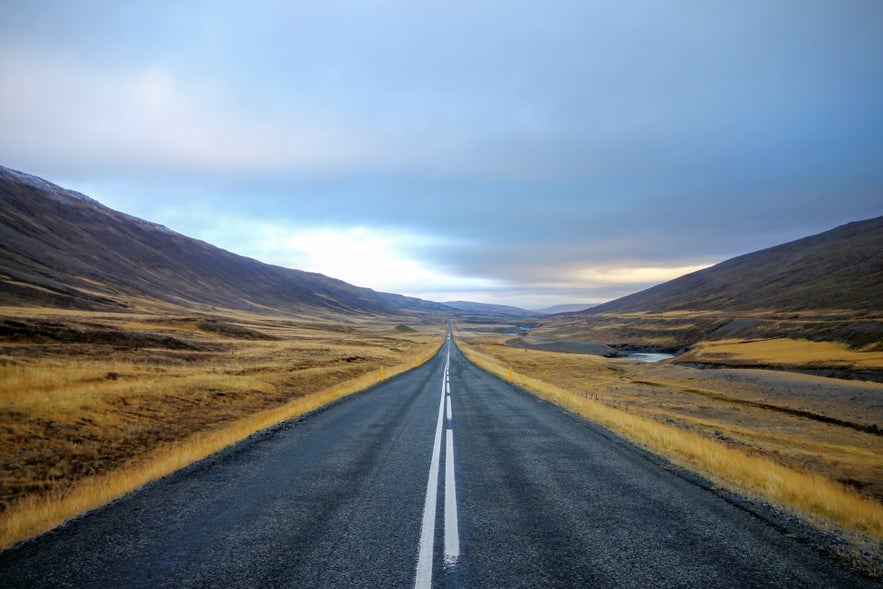 Photo by Matteo Paganelli
Photo by Matteo Paganelli
Well, whilst Hollywood has certainly done its best to persuade us of the adrenaline-kick that hitchhiking provides, doing so in Iceland is actually far safer than most places on earth. This is not only due to the country’s lack of crime but also to the sheer prevalence of hitchhikers here.
Safety numbers regarding hitchhiking are particularly hard to come by. There have only ever been two surveys examining the trend, the first in California, 1974, the second in Germany, 1989.
The survey undertaken in California found that hitchhikers were not disproportionately likely to become victims, whilst the 1989 survey found that while verbal altercations happened every so often, physical attacks were incredibly rare. Not that the trailer for 1986's "The Hitcher" would tell you that...
Thus, it would seem the perception of how dangerous hitchhiking is actually far outstretches the relatively mundane reality of the situation. Should you find yourself in a sticky situation, however, know that the Icelandic Emergency number is 112.
There is also a downloadable app that lets the relevant authorities keep track of your location at any given time. You can read more about it in our article, Top 10 Apps For Travelling in Iceland.
Now a decade past the beginning of Iceland’s tourism boom, hitchhikers have become a natural part of the scenery here, a constant reminder of this country’s incredible pull on overseas guests.
Advantages of Hitchhiking in Iceland
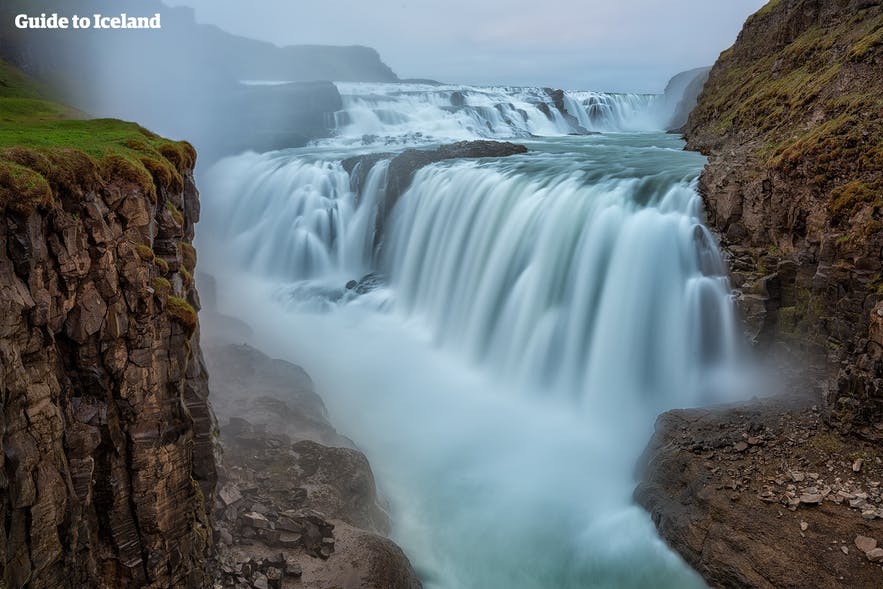
Hitchhiking in the summer months in Iceland should see you fairly well prepared weather wise, though don’t take this for granted for a moment. Despite the sun’s affirming glow outside, there’s no telling what the skies are up to here, requiring you to prepare ahead. Even in the summer, always ensure you’re kitted out with gloves, wind/rain-proof gear and plenty of snacks and drinks.
Actually waiting for that special person to stop and pick you up can be an immensely enjoyable experience unto itself. With an unspecified amount of time hitching, you’ll find yourself immersed in the landscapes of Iceland, be it the rolling fields of the country, or the urban vistas of Iceland’s capital, Reykjavík.
Because hitchhikers are a common sight nowadays in Iceland, one way to find out advice on where the best pick-up spots is to ask bus and taxi drivers directly. They may not have experience hitchhiking themselves, but they might just have some insight.
- See Also: Travel Etiquette in Iceland.
One of the greatest benefits of hitchhiking in Iceland is the chance to meet entirely new people. Sure, lots and lots of vehicles are likely to pass before one stops, but who would want to catch a ride with those sad sacks anyway? When that generous individual finally does stop, you’ll be able to thank them with a sincerity that positively beams “new friends”.
On that note, understand that given Iceland’s popularity as a holiday destination, you’re just as likely to get picked up by a fellow tourist as you are an Icelander.
Disadvantages of Hitchhiking in Iceland
One of the obvious disadvantages of hitchhiking in Iceland is the country’s tempestuous weather. It has been well documented that Iceland’s weather is capable of changing within the space of a few minutes, a fact that should cause some concern for those planning on standing outside for extended periods of time.
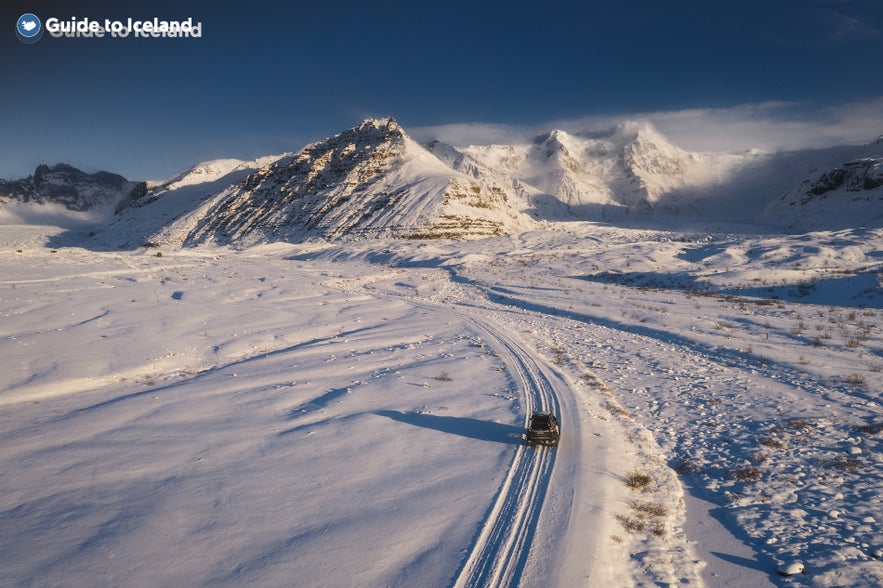
Not only may you have to face the dangers of heavy rain and snowfall, but such conditions also severely dampen visibility on the roads, making you far harder to see at a distance. This poses a danger to both you and the driver—if conditions are bad, in all truth, neither you nor they should be outside in the first place.
If you're in the capital city, Reykjavík, terrible conditions pose far less of a problem. If, however, you find yourself isolated somewhere in Iceland's wildlands, chances are you will find not much shelter from the elements.
- See Also: Weather in Iceland & Best Time to Visit.
Of course, despite Iceland’s impressive record for crime safety, getting into a stranger’s vehicle is always going to bring an element of risk with it, especially if, unlike me, you’re not a seven foot, heavily muscled beast of a man. There are a number of precautions that you can take, however, to help you feel more comfortable about hitchhiking as a practice.
One thought might be to try to hitch a ride at petrol stations rather than beside the roadside. Not only does this keep you in close proximity to other people, it also makes sure that you—and, importantly, your prospective driver—have been picked up on CCTV and seen by others.
This little slice advice leads on nicely to another; only ever go hitchhiking during the daylight hours. Sometimes this may not be possible, but you should always aim to keep the days free for travelling, and the night for rest.
- See Also: What to Pack for Travel in Iceland.
If weather conditions are particularly bad, make sure you question yourself as to whether you're willing to put your lives in the hands of another driver—though some might argue, being trapped in Kópavogur overnight beats spinning out of control in the passenger seat.
Make sure to never accept a lift from an impaired driver and always trust your gut instinct. If it doesn’t feel right, DON’T do it. Also, hitchhiking with another has been shown to diminish the risk factor by 6, making it a far more sensible and safe means of doing it.
Strætó Bus System
Potential hitchhikers should make themselves aware of the Strætó Bus System, Iceland’s official public transport, as well as downloading the companion app Strætó.
This mobile application allows you to book multiple tickets in advance of your journey and customise your routes in all of the regions in which the system operates, including the Capital Region, the South Coast—from the capital, Reykjavík, to Höfn í Hornafirði—and both the north and west.
Public transport in Iceland is clean, safe and fairly efficient, a bus arriving every fifteen minutes or so at each stop within Reykjavík city. However, the buses are not as frequent outside of the city, and there may even only be one or two stops at a countryside location per day.
Whether you use this public transport to take you as far as you can towards various attractions, or simply to nip around the city quickly, you’ll find Strætó to be a helpful asset during your time here.
One thing to be aware of when it comes to Iceland's public transport is that, naturally, the street and stop names can be a little confusing. Make sure to get to grips with the map before starting your journey so to as avoid ending up in the entirely wrong location.
By utilising the bus system in Iceland, you secure yourself a handy alternative if traffic is particularly quiet on certain days, or you simply can't hitch a lift. Just make a note of the timings in advance. With the bus system, you can feel secure that you'll reach whatever destination suits you—how much time you spend trying to catch a ride, however, is entirely up to you.
Summer Bus Passports
One sure-fire way of avoiding the perils of both hitchhiking and your own rental car is by booking cheap bus tours in Iceland. Bus tours take you from designated departure points to some of Iceland’s most beloved places, including “the capital of the North”, Akureyri, and the hiker’s paradise, Landmannalaugar, in the Icelandic Central Highlands.
- See Also: Maps in Iceland
Purchasing a bus passport is one of the optimum choices for travellers on a budget. Some passports allow you to travel one singular route, setting your own pace as you do so, whilst others are open to customizability, allowing you to visit a variety of attractions in different directions.
There is a range of different bus passports available to choose from, with many specifically catering to certain tastes and activities. For instance, it is possible to purchase a Full Circle bus passport, valid for two months, that entails one bus trip per day—this means you can stop as you see fit but will need to organise your own overnight accommodation.
Another specialist option might be the Hiker’s Passport, taking you to such highland regions as Landmannalaugar (“The Pools of the People”), Þórsmörk Valley and Fimmvörðuháls. Please be aware, however, that access to highlands, by any means, is only available during the summer. For the majority of the year, the mountainous highland roads are simply impassable to the majority of vehicles. You will also need to bring both warm clothes and your food with you as there are hardly any shops to be found in these locations.
In truth, a sensible way of considering hitchhiking in Iceland is to blend a variety of these options. Hitch a ride to one location, wait for a bus... then hitch your ride to the next stop! With an openness like this, you'll find your journeys around the country more than feasible, as well as a fantastic way to experience Iceland and meet friends for life.
Did you enjoy our article about hitchhiking in Iceland? Have you been hitchhiking here, and if so, how was your experience? Make sure to leave your thoughts and queries in the Facebook comments box below.

